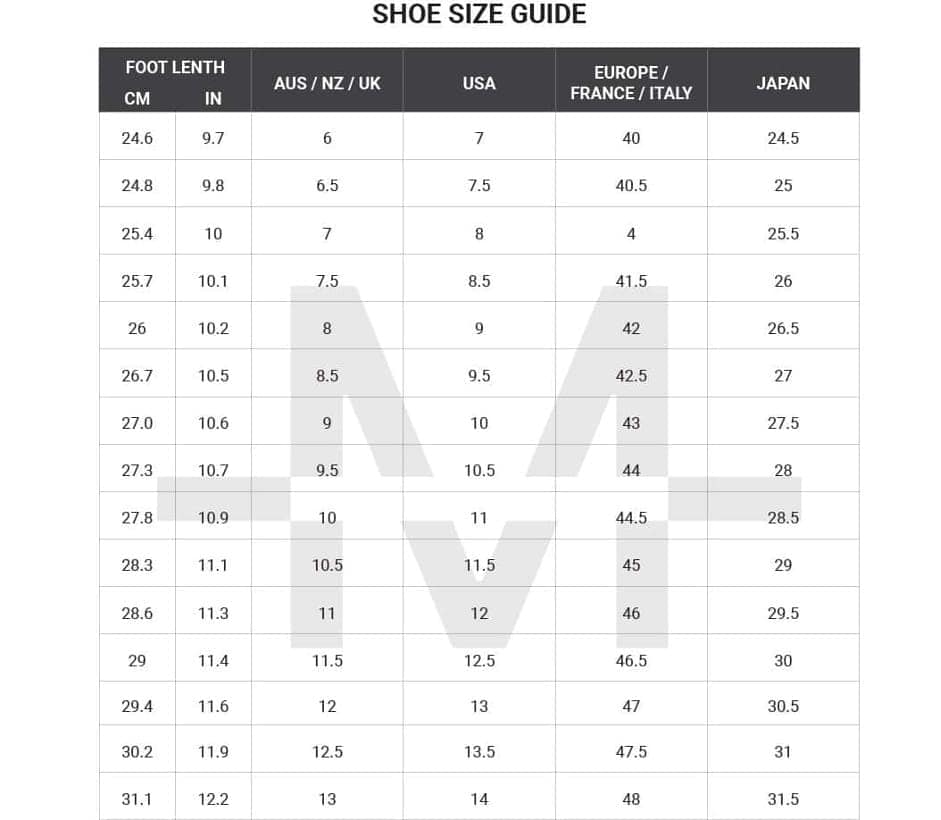A Parent’s Guide to Australian Shoe Size to UK Conversion for Kids
Hello wonderful parents! Have you ever found yourself scratching your head, trying to figure out how Australian shoe sizes translate into UK sizes for your children’s footwear? Well, never fear, because we’re here to make sense of it all with a cheerful and easy-to-understand guide!
Whether you’re online shopping for some cute sandals from a UK retailer, or planning to surprise your kiddo with some trendy boots while on holiday, getting the size right is crucial. After all, we want those tiny toes to be both stylish and comfortable!
Why Understanding Shoe Size Conversion is Important
Before we hop into the numbers and charts, let’s talk about why this is so important. Not all shoe size systems are created equal, and an Australian size might not directly match its UK counterpart. This can be particularly confusing when dealing with children’s growing feet, as the right fit is essential for their foot health and development.
Moreover, a comfy pair of shoes can mean the difference between a cheerful child and one who can’t wait to kick off those pesky pinchers. So, getting the conversion right means happy feet and happy kids!
The Basics of Shoe Size Conversion
The first thing to know is that Australian children’s shoe sizes are generally two sizes up from the UK sizing. So, if your little one is wearing an Australian size 7, in the UK, this would typically be a size 5. But remember, this is a general rule and it might vary slightly between brands and styles of shoes.
Let’s break it down:
- Australian Size 5 = UK Size 3
- Australian Size 6 = UK Size 4
- Australian Size 7 = UK Size 5
- Australian Size 8 = UK Size 6
- …and so on.
Although this gives you a rough idea, we always recommend checking the brand’s specific size chart for the most accurate conversion.
Factors to Consider When Converting Shoe Sizes
Before we jump into the full conversion chart, there are a couple of factors we need to consider:
- Brand Variance: Different brands may have slight variations in sizes, so use the conversion as a starting point, but always check the brand’s specific size guide.
- Shoe Type: Trainers, boots, sandals, and other types of shoes might fit differently, even if they’re technically the same size.
- Children’s Growth: Kids’ feet grow at lightning speed! Make sure to measure their feet periodically to ensure they’re always in the best-fitting shoes.
Comprehensive Australian Shoe Size to UK Conversion Chart
Now, let’s dive deeper into the comprehensive conversion chart which will make selecting the right size as easy as pie. Remember, this chart is a guideline, and we always suggest referring to the specific shoe size chart from the brand or store where you’re making your purchase.
Below you’ll find the conversion table for Australian children’s shoe sizes to UK shoe sizes. This table will be continuously updated to reflect any changes and ensure that you always have the most current information at your fingertips. Keep this guide bookmarked or print it out for a handy reference!
Stay tuned, as we delve into the nitty-gritty soon!
Finding the perfect shoe size for your child doesn’t have to be a fairytale. With this guide, you will become the hero of footwear, ensuring your little adventurer’s quest for comfy shoes is always a success. And remember, our children’s feet are the foundation of their active lives, so let’s make sure they’re equipped with the right sizes to help them explore the world with confidence and comfort. Keep reading for an even more detailed look at Australian shoe size to UK conversions!
Stay tuned for more detail in our upcoming sections where you will find the full Australian to UK shoe size conversion chart, tips on how to properly measure your child’s feet, and how to handle those inevitable ‘in-between’ sizes. Your journey to mastering the art of international children’s shoe sizing starts here, and we’re excited to be with you every step of the way!

5 Things Parents Should Know in Preparing for Australian Shoe Size to UK Conversion
As we embark on converting Australian shoe sizes to UK sizes for our kids, there are five key things every parent should be clued up on. These tips will help you be prepared and confident in finding that perfect-fitting shoe across international sizing systems.
1. Regularly Measure Your Child’s Feet
Children’s feet grow incredibly quickly, so it’s important to measure their feet every 2-3 months. This ensures you’re up to date with their current size, reducing the guesswork when buying new shoes, especially from international brands.
2. Understand The Size Differences
Australian shoe sizes for children are typically two sizes larger than UK sizes. This rule of thumb is handy, but always double-check with a brand’s specific sizing guide as there may be variations that can affect the fit.
3. Shop by Insole Length
When in doubt, look for the insole length in centimeters on shoe size charts. This gives you a more accurate measurement to compare sizes internationally and provides a better indicator of what shoe size to choose for your child.
4. Account for Growth and Space
Allow for about a thumb’s width (approximately 1.5 cm) of extra space from your child’s toe to the end of the shoe. This gives them enough room for natural movement and growth, ensuring the shoes last longer.
5. Factor In Half Sizes and Widths
Not all shoe brands offer half sizes or different widths, but when they do, these options can provide a more tailored fit for your child. Be sure to check if these options are available, especially for kids with particularly narrow or wide feet.
Detailed Insights into Conversion
Understanding the nuances of shoe sizes can be a game-changer for ensuring your child’s comfort. For this reason, in the upcoming section, we’ll be providing an in-depth look into how to interpret and use shoe size conversion charts effectively, including how to measure foot length and width for the most accurate fitting.
The alignment of Australian and UK sizes might be similar in number, but factors such as the shape of the shoe, the material, and the type of closure (laces, velcro, slip-on) can significantly influence the way a shoe fits. It’s good to keep in mind that some children might prefer a snugger fit, while others need a bit more wiggle room, and this preference may sway your size choice slightly.
Moreover, each child’s feet are unique, and as they grow, their size requirements can change not just in length but also in width. Proper shoe fitting should accommodate both of these dimensions to ensure that footwear supports healthy foot development.
We want every step on the journey of finding the perfect pair of shoes to be joyful and straightforward. That’s why this guide will become an indispensable tool for you, ensuring that no matter where you are, you can always bring home shoes that your child will love to wear, and that will love them back with comfort and support. Our upcoming sections will focus on these intricate details to give you all the tools you need for successful shoe shopping, so stick around!
For more great articles please see here. For more information see here
Disclaimer
The articles available via our website provide general information only and we strongly urge readers to exercise caution and conduct their own thorough research and fact-checking. The information presented should not be taken as absolute truth, and, to the maximum extent permitted by law, we will not be held liable for any inaccuracies or errors in the content. It is essential for individuals to independently verify and validate the information before making any decisions or taking any actions based on the articles.




